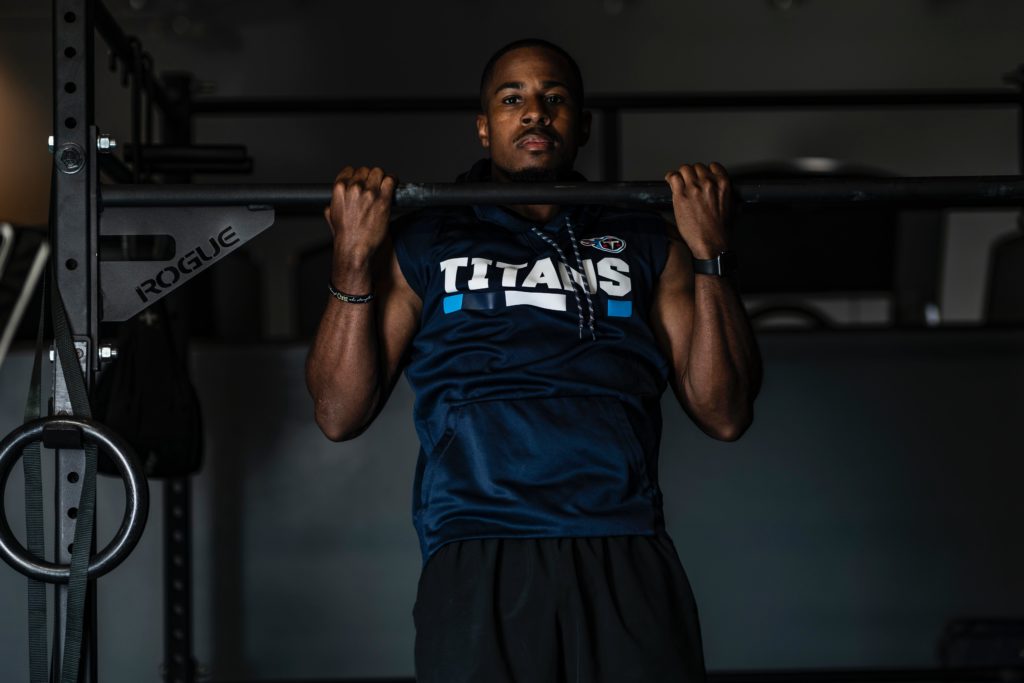Home// Articles// Advisors & Board of Directors// How To: Build a Personal Board of Advisors
How To: Build a Personal Board of Advisors
 Sarah Hodges
Managing Partner at Pillar VC
Sarah Hodges
Managing Partner at Pillar VC
I’ve spent the last few months connecting with dozens of leaders who have built some of Boston’s most meaningful companies, with one goal in mind– discover how to reverse-engineer a unicorn.
What separates good companies from great companies, mediocre leaders from exceptional leaders?
To start, I reached out to a few of the leaders who co-founded our venture fund, Pillar. Steve Conine and Niraj Shah launched Wayfair on a shoestring budget in a spare bedroom of Steve’s house in 2002; a decade later, the company is public and in 2016, generated $2.25 billion in net revenues across over 7 million products. Tom Ebling’s company, Demandware, raised just $54 million when it was a startup; Salesforce acquired the company for $2.8 billion last year. First time founder, Jason Robins, has grown DraftKings from a $75K investment to the leading fantasy sports company, with over 5 million users. What’s the secret to their success?
With every new conversation, a constant theme emerged — no one achieved success without the help of a group of trusted advisors.

You’re On CEO Island —
Get Off As Fast As You Can
Remember how living alone on an island drove Tom Hanks crazy in Castaway?
You are Tom Hanks in your startup.
There’s only one CEO in a company, and it can be a lonely gig. When product-market fits seems like a pipe dream, it’s on you to inspire your team to find a path forward. When you start to see traction at the exact moment that you’re rapidly running out of cash, it’s on you to figure out how to extend your runway. When your head of sales leaves just before the end of an important quarter, it’s on you to pick up the pieces and pull off a miracle.
If you’re lucky, you have a passionate, productive, collaborative, healthy management team (too many companies don’t). If you’re really lucky, you also have an incredibly supportive board. But no matter how good you have it, there are complicated dynamics at play on any executive team, and there are just some things you aren’t ready to share with your board.
At the end of the day, you’re the only person in the CEO seat — that’s an awful lot of weight to carry on your own.


Your Board of Advisors
is Your Life Raft
A personal board of advisors is designed to help ease the burden. The right group is a cluster of people who provide you with career guidance, strategic advice, coaching, and emotional support. While the role of your Board of Directors is company governance, the role of your Personal Board of Directors is to support you.
The first thing to consider is the “who”–get the right people in your boat.
Mentor
This role requires a deep personal commitment, and is reserved for a select few. A mentor is someone who you rely on for career guidance, providing both strategic and emotional support. Your mentor doesn’t have to be someone who works in the same industry as you, but should be someone whose advice you trust, with relevant life experience.
Sponsor
Think about the people who champion your success; those are your sponsors. Sponsors are the people who enjoy putting you in the path of opportunity, and believe in your potential.
Coach
Building a company is filled with new territory. Coaches are functional subject matter experts who have experience with specific markets, industries or skills. As a CEO, you’re a generalist in just about everything. An arsenal of strategic advisors can help you navigate everything from hiring your first head of sales to identifying the right go-to-market strategy.
A good Personal Board of Advisors mirrors a strong ecosystem, and has both diversity and redundancy. But one thing remains common across every person on your board–they’re all deeply invested in you.

The Hard Part —
Finding the Right People
Now you might be thinking, “This all sounds great, but how do I find these people?”
Sponsors. Let’s start with Sponsors (the easy ones). Chances are, you already have a few in your midst. Carve out 15 interrupted minutes for yourself. Sit down with a pen and paper, and write down the names of people who have recently promoted you to others.
🛍️
Who’s been raving about you to potential customers?
🔑
Who helped you recruit a key team member by singing your praise?
🛸
Who takes the time to tell you how much they believe in you?
Now that you have your list, consider how you can strengthen these relationships by keeping people up to date on your progress, and continuously thanking them for their support. This group will evolve as new sponsors come and go in your life–keep your senses tuned to your “promoters” to spot them.
Find a Coach (Strategic Advisor). Now for Coaches. Every company needs specific expertise during different chapters of its growth. The key is to understand what you need at a given moment in time (with the expectation that this group will evolve). When looking for coaches:
1.
Reach out to your community.
2.
Ask your board.
3.
Find experts online.
4.
Identify companies that inspire you.
On to the the tough one, Mentors. Finding a great mentor requires patience. Mentorship involves a deep investment on both sides, and those relationships take time to come to fruition. Sending someone a cold email asking them to be your mentor is like opening the door and throwing a big wet kiss on your unsuspecting blind date. It’s just too soon — don’t do it.
Be patient. Great mentors are often people you spend time getting to know. Your mutual respect and trust strengthens as your relationship develops. Your future mentor might be someone with whom you previously worked. It might be a former customer. It might be someone you met through a colleague. The less you know each other, the more time you need to invest to develop rapport and ensure that your mentor is interested, has bandwidth, and has the right experience to guide you in your career.
All too often, someone decides they need a mentor, and then just expects one to magically appear. Finding a mentor means investing in building and strengthening your network over time, and thoughtfully developing relationships with people who make an imprint on you.
If you have a budding relationship with someone you think has the potential to mentor you in the long-run, ask them to meet (and make sure to follow these guidelines for how to engage–no one likes a networking leech). Don’t ask them to be your mentor on day one; feel out your connection and start to get to know them on a deeper level.

Identify Each
Individual’s Motivation
You know your own motivations, but what are theirs?
Before you formalize your relationships with your advisors, make sure you’re clear on how YOU can deliver value.
A good relationship drives value on both sides. “Coaches” will be the most accustomed to receiving payment or financial incentives for their work. Remember, that these people are deep in a skill they’ve made a living around — that’s why you’re interested in their advice — so you’ll want to carefully walk the line of financial compensation. Discuss up front whether, when, and how it makes sense to pay them for their expertise, or if there are other motivations at play.
Mentors and sponsors likely aren’t in it for the Benjamins. They could excited about the opportunity to see a promising new founder flourish. They could be intrigued by the chance to help you transform an industry. They could enjoy the chance to give back and share their knowledge and insight. Part of ensuring that the relationship drives value on both sides is understanding each individual’s motivation. Just ask.
LoAs your relationship deepens, if an advisor is driving sustained value, it may be appropriate to given them advisor shares in your company; signal that you appreciate the contribution by making your relationship more formal. In past companies, we’ve typically issued a small but symbolic amount of annual shares that vest over 12 months, with the option to renew if an advisor continues to play a meaningful role in our company’s success.
If an advisor is driving sustained value, reward them with shares in your company.


Create Structure
to Create Value
Founders often remark that they have a group of advisors in place informally. If you only went to the gym informally, would you expect to see results? Exactly. When your goal is to maximize value from a highly valuable group of people, a fluid approach just won’t cut it.
First Round Capital recently shared a blueprint for how to think strategically about engaging with advisors from Accompany CEO, Amy Chang. The key takeaway? Formality strengthens connection. Chang relies on dozens of carefully selected leaders for their insight, and groups them into two categories — “light touch advisors” and “board advisors” (deeper time commitment). Setting clear expectations and leaning on a formal approach enables her to engage people who might not otherwise be interested or have enough time to commit.
Whatever your approach, don’t leave something as critical as your Personal Board of Advisors up to chance.
Align on Clear Expectations
Now that you understand what matters to your Personal Board of Advisors, have an open conversation about how you’ll engage. Be clear about what you want out of the relationship. Make sure you’re on the same page about:
🔜
How often you'll meet
🎙
What types of discussions you’ll have
⌛
Overall time commitment on both sides
A great mentor is also someone you can pick up the phone and call in a challenging moment when you need guidance — make sure your mentor is also open providing this kind of support. Meet with mentors at least quarterly to ensure that you’re not missing an opportunity for valuable feedback. Set up time to meet well in advance to get on your mentor’s calendar; while it may not seem like you have anything pressing to discuss when that day rolls around, it’s always useful to invest in your relationship. Putting the time in when you aren’t in a moment of crisis, is just as important as when you are.
Coaches are typically people you engage in a moment in time, when you have a specific defined need. Talk with these strategic advisors about your timeframe and what you’re trying to achieve, then set up clear touch-points to reflect how you’ve aligned on working together.

Keep Pumping Air
Into Your Raft to Stay Afloat
Getting the most out of your Personal Board of Advisors requires cultivating your relationships over time. Don’t make them do the heavy lifting. Whether it’s sending over calendar invites, providing periodic updates so they know what’s new in your world, or as simply heading to a convenient spot for them when you meet for coffee and picking up the tab, make it as easy.
During the “quiet” periods, when you don’t need as much support, get in the habit of sending your Personal Board of Advisors a monthly board update, just as you would your Board of Directors. This can be a simple email, just a couple of paragraphs about what’s new in your word. Let them know how you’re challenging yourself personally, which big milestones are ahead for your company, and where you anticipate you might need their help down the line. This is also a great time to ask how you can be helpful to them.
Building a startup is a long and winding road, and there are plenty of roadblocks along the way.




